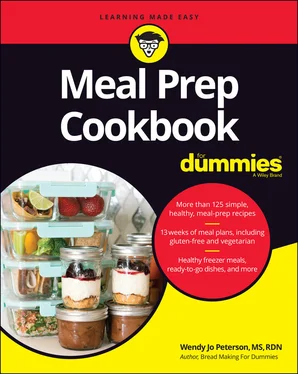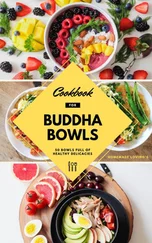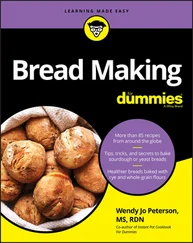 I use the Warning icon when I’m filling you in on important safety tips or tricks.
I use the Warning icon when I’m filling you in on important safety tips or tricks.
 When I have an important message or reminder, I use the Remember icon.
When I have an important message or reminder, I use the Remember icon.
In addition to the book you have in your hands, you can access some helpful extra content online. Check out the free Cheat Sheet for tips on keeping vegetables fresh, tips on freezing foods, and meal-prep hacks by going to www.dummies.com and entering Meal Prep Cookbook For Dummiesin the Search box.
If you’re brand-new to meal planning and meal prep, spend some time getting to know the process in Part 1. If you’re ready to start coming up with a meal plan, head to Part 2. Ready to start cooking? Parts 3, 4, and 5are for you. Short on time? Part 6sets you up with ten sauces to make meals pop, ten recipes for meal kits you can make at home, and more.
I hope you find family favorites, recipes you come back to again and again in this book and that it’s the first book you pick up when life gets crazy and you need to focus on meal prep to get some sanity. Enjoy!
Part 1
Getting Started with Meal Prep
IN THIS PART …
Discover what meal prep means to you.
Stock your kitchen and pantry with the right tools for meal prep.
Shop for groceries for the weeks ahead.
Chapter 1
Finding the Meal-Prep Method That’s Right for You
IN THIS CHAPTER
 Exploring different schools of thought on meal prep
Exploring different schools of thought on meal prep
 Figuring out which method is best for you
Figuring out which method is best for you
In this chapter, I introduce you to a variety of styles of meal prep, from prepping all on one day to partial prep to freezing meals and batch cooking. There’s no right way to do meal prep — it’s more about figuring out what works best for you and your family. You can do all your meal prep on one day, or you can prep parts of a meal, or a combination of both.
 As you embark on the journey of meal planning and into meal prep, be sure to give yourself a little time, patience, and grace. Changing habits takes time, but the more you do it, the faster and easier it’ll become.
As you embark on the journey of meal planning and into meal prep, be sure to give yourself a little time, patience, and grace. Changing habits takes time, but the more you do it, the faster and easier it’ll become.
MEAL PREP VERSUS MEAL PLANNING
Meal planning is planning which meals you want to make in the week ahead — lasagne on Monday, tacos on Tuesday, and so on. You can use your meal plan to create a grocery list so you have all the ingredients to make those meals.
Meal prep is actually preparing the meals. You can do meal prep in stages or all at once.
Meal planning and meal prep don’t have to be complicated. You don’t have to cook every day, and they aren’t strictly set in stone. Instead, think of them as useful tools to help you create budget-friendly, healthy meals at home, instead of stressing about what you’ll eat for every meal.
Prepping One Day, Eating for the Week
Whether it’s just prepping breakfast, lunch, or even all your meals, some people enjoy cranking out meal prep in one day, so they only have to do minimal cooking throughout the week.
With this approach, you start by planning however many meals you need for the week. Then you create a grocery list and go shopping. Finally, you prep as many of the components as you can for each meal. This may mean combining spices in advance, premeasuring and prechopping ingredients, labeling the items for the meal, and refrigerating together.
With this form of meal prep, consider prepping for three or four days at a time. This will give you room for leftovers or a change in plans that may prevent you from eating at home. Besides, most ingredients are best prepped only a couple days ahead of time in order to retain the freshness and integrity of the food.
If you have the mental bandwidth to plan and prep for the week, the time to prep one day a week, and little time for cooking during the week, this method is for you. I use this method of meal prep when I know I’ll have very little time in the coming week, but I want to make sure we’re eating at home. You can also use a variety of meal preps to help execute the full week of meals — from freezer meals to ready-to-eat meals.
 If this style of meal prep makes you happy, consider checking out my dear friend and fellow chef and dietitian, Allison Schaaf, over at PrepDish.com (
If this style of meal prep makes you happy, consider checking out my dear friend and fellow chef and dietitian, Allison Schaaf, over at PrepDish.com ( https://prepdish.com ). She specializes in gluten-free meal prep, prepped one day and enjoyed for the week.
MEALS THAT GUIDE YOUR YEAR
On average, most Americans have about a dozen meals that they routinely make all year long. For instance, my mom would make spaghetti, sloppy joes, hamburgers, cream of turkey over biscuits, shake-and-bake chicken, stuffed peppers, tacos, chicken noodle soup, macaroni and cheese, pizza, grilled chicken, and fried chicken regularly — and I’m recounting this after 30 years of not living in her house! Humans like to eat what we’re comfortable with and what’s familiar. A great way to expand on this menu pattern is to create subtle changes in the menu. Take a moment and write down 12 meals you frequently make in your home.
Then work on revamping and revitalizing these meals with subtle changes. For instance, using my mom’s meals as an example, here’s how I would morph her standard meals and create new ones:
| Instead of … |
Try … |
| Spaghetti |
Beef, mushroom, and kidney bean spaghetti |
| Sloppy joes |
Southwestern turkey sloppy joes |
| Hamburgers |
Greek lamb burgers |
| Cream of turkey over biscuits |
Cream of turkey with peas over whole-grain biscuits |
| Shake-and-bake chicken |
Shake-and-bake Mexican chicken |
| Stuffed peppers |
Quinoa-stuffed peppers |
| Tacos |
Fish tacos |
| Chicken noodle soup |
Chicken and sweet potato soup |
| Macaroni and cheese |
Butternut squash macaroni and cheese |
| Pizza |
Whole-grain pizza |
| Grilled chicken |
Grilled chicken with chimichurri sauce |
| Fried chicken |
Fried chicken salad |
Using a different spice blend, protein, or more vegetables can really transform a meal. Now you have 24 meals in your routine, instead of just 12!
Another popular style of meal prep is where you prep meals in advance. Generally, people make one set meal and then place it in a container for the week, to be reheated or enjoyed cold.
Make a stew, roast, or sheet-pan meal on one day. Then take that meal and preportion it into containers to eat for the week. You can also do this with breakfasts, salads, or bowls (see Part 3).
Читать дальше

 I use the Warning icon when I’m filling you in on important safety tips or tricks.
I use the Warning icon when I’m filling you in on important safety tips or tricks. When I have an important message or reminder, I use the Remember icon.
When I have an important message or reminder, I use the Remember icon. Exploring different schools of thought on meal prep
Exploring different schools of thought on meal prep If this style of meal prep makes you happy, consider checking out my dear friend and fellow chef and dietitian, Allison Schaaf, over at PrepDish.com (
If this style of meal prep makes you happy, consider checking out my dear friend and fellow chef and dietitian, Allison Schaaf, over at PrepDish.com ( 










